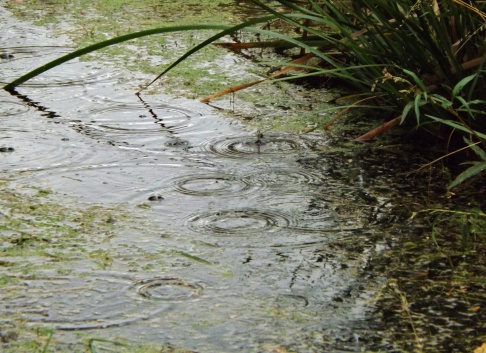
Opponents charge that the EPA “wants to regulate every single puddle.”
Is the United States Environmental Protection Agency’s (EPA) proposed rule defining the “waters of the United States” an attempt to keep small bodies of water clean for families and businesses, or is it an overreaching intrusion into private property? It depends on who you ask.
Proponents like Environment America applaud the effort as “vital to the health of America’s great waters,” claiming the proposed rule is needed to ensure “waterways get the protection they need so we can enjoy them for years to come.”
Opponents decry the proposed rule as a “power grab” and a “brazen attempt to impose a radical redefinition specifically rejected by Congress and the Supreme Court.”
At the request of a number of governments, non-governmental organizations, and other associations, the rulemaking process began in an effort to clarify the bodies of water that are and are not covered by the Clean Water Act. According to the EPA, recent Supreme Court decisions created complexity and confusion when determining protection under the Act, limiting its reach and leaving open questions about the agency’s authority over smaller or temporary waterways.
The proposed rule would establish protection over “most seasonal and rain dependent streams” and “wetlands near rivers and streams.” It would also subject waters with “more uncertain connections with downstream water” to evaluation on a case by case basis, depending on the significance of the connection.
The EPA considers these types of small waterways important because roughly 60% of streams in the U.S. are seasonal or temporary, caused only by rain. Furthermore, one in three Americans ultimately gets their drinking water from public utilities accessing these intermittent waterways.
According to the EPA, its proposed rule would likely increase efficiency for businesses because such businesses would know with certainty whether a body of water is protected by the Clean Water Act.
The agency’s own cost-benefit analysis estimates that the proposed rule would generate between $388 million and $514 million in annual public benefits from flood reduction, pollution filtration, increased support for hunting and fishing, groundwater rejuvenation, and improved wildlife habitat. The agency projects the costs of the proposed rule at between $162 million and $279 million.
An Environmental Law Institute report explains that 36 states have little or no ability to pass legislation protecting waters that are not covered by the Clean Water Act. Thus, in specifying the Clean Water Act’s coverage to include smaller waterways, these states would be empowered to protect smaller waters as they see fit because the Clean Water Act would grant states additional regulatory discretion.
The EPA asserts that its proposed rule would not protect any new bodies of water or expand the scope of the Clean Water Act beyond the narrow interpretation offered by the Supreme Court. It also says the proposed rule would not regulate groundwater or ditches, and it would preserve the exemptions and exclusions already in place for agriculture.
Opponents, including some agricultural leaders, think the proposed rule represents a novel interpretation of the Clean Water Act. The case-by-case test to determine whether a significant connection exists between a water source and protected waterway also leaves questions for agriculturalists. The American Farm Bureau Federation criticized the proposed rule as a “serious threat” to farmers, stating that the regulatory burden that would be imposed on farmers, ranchers, and other landowners would inflict economic damage.
All eight Republican Senators on the Environment and Public Works Committee expressed concern recently in a letter to President Obama, declaring that the proposed rule would “exponentially impede economic recovery and is a significant step in the wrong direction.”
The resistance extends to the other side of the aisle. Democratic Senator Mary L. Landrieu (LA), Chair of the Energy and Natural Resources Committee, chided the EPA and the proposed rule as “yet another example of this agency overreaching and stepping outside of its bounds without thought to the economic consequences of its actions.”
In addition, Democratic Governor of Colorado John Hickenlooper, chair of the Western Governors’ Association, urged federal officials to consult the states in the EPA decisionmaking, warning that the proposed rule could “impinge upon state authority in water management.”
Proponents of the proposed rule, however, including groups representing business, agriculture, and the environment, think the benefits outweigh the risks. League of Conservation Voters President Gene Karpinski expressed the sentiments of many favoring the proposed rule, stating, “This is an important step forward for restoring the true scope of the Clean Water Act and protecting our nation’s waterways. This rule will protect vital streams and wetlands that provide drinking water for over 117 million Americans, filter pollution, and reduce the impacts of flooding and erosion.”
The EPA is accepting comments on the proposed rule until July 21, 2014.



